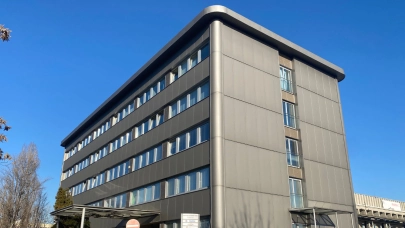
Uncertainty and volatility have been the two dominant trends shaping the commercial real estate market and buyer sentiment in recent months. However, according to the latest report from Cushman & Wakefield, the Polish market, whose fundamentals remain strong, is broadly expected to regain equilibrium. Change is being seen in the number and types of real estate transactions taking place – due to the constrained availability of safe prime assets for sale on the office market and high financing costs, investors seeking higher returns are turning their focus to higher-risk transactions. With retail footfall figures for large schemes back at satisfactory levels after the pandemic and attractive asset pricing, the retail market has become an interesting sector for bargain hunting. The warehouse and logistics sector continues to feature prominently on investors’ radars.
"Interest rates which have remained high for a long time have translated into higher project financing costs and led to real estate repricing on all the major European and global markets. This has resulted in a polarisation among buyers, with some looking for new and safe assets generating potentially lower rates of return, and others choosing to invest in projects generating relatively higher returns”, comments Paweł Partyka, Head of Capital Markets Poland, Cushman & Wakefield.
The latter strategy has translated into stronger investor interest in higher-risk projects, such as value-add projects or older, distressed assets in need of repositioning or repurposing.
"Core assets, especially in the logistics sector, remain the most sought-after investment products. However, due to higher expectations of returns, they need to offer something extra that could add to their profitability - above all they must be let on lower-than-market rent levels. This is a notable trend, particularly in the logistics sector, which has seen one of the strongest rental growths in the last 18 months. It is worth noting, however, that such products are becoming increasingly scarce due to ongoing indexation as indexed rents are nearing current market levels recorded for new leases”, adds Robert Tomaszewski, Senior Investment Consultant, Capital Markets Poland, Cushman & Wakefield.
Growth powered by ESG megatrends
ESG has become an integral part of investment fund strategies. Regulatory pressure is translating into more rapidly changing occupier expectations and the requirements of capital supporting institutional real estate funds.
"A holistic view and assessment of real estate projects in terms of financial aspects and their environmental and social impact will become a market standard. Therefore, a serious and strategic approach to ESG will even today undoubtedly contribute to building a competitive advantage and creating long-term value for companies”, says Paweł Partyka.
The expert from Cushman & Wakefield adds that investment strategies need to be adapted to new standards due to the growing importance of ESG trends. This is an even greater challenge as such standards have not been fully defined at the regulatory and market levels, which is creating financial and organisational pressure.
"It is, however, already clear that adaptation of some properties to strict ESG standards is likely to be too costly. If that is the case, such buildings are generally put to a different use while retaining most of their existing structures. However, repurposing projects tend to be demanding and require an in-depth HBU analysis to determine which of the available options will be the most advantageous for the property owner. There are very interesting months and years lying ahead and, with the investment fundamentals of the Polish property market being strong, there is a cautious optimism for buyer activity”, concludes Paweł Partyka.



